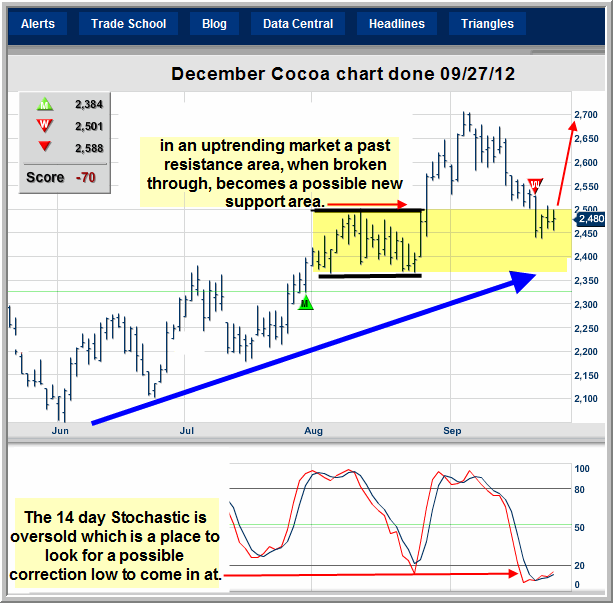By Corrie Salientes-NarismaPhilippine Daily Inquirer9:47 pm | Sunday, September 30th, 2012

Amazing Grace: Kraft employees spend time with their “boss” to know her needs, concerns, dreams and aspirations.
MANILA, Philippines—If President Aquino claims to have us, the Filipino people, as his boss, Kraft Foods (Philippines) Inc. has Grace.
And just like the President’s boss, Kraft’s Grace refers to no particular person. Instead, it alludes to every Filipino woman who decides what to feed her family.
Grace is Kraft’s main market, and it was named so because a research commissioned by the company a few years ago showed that it was the most common woman name in the country.
“And if Grace is the boss and the boss is important, we need to get intimate with her, know what she wants and needs. The aim is to keep her satisfied and happy,” says Kraft Philippines general manager Sudip Mall.
This paved the way for “amazing Grace,” not the Christian song but an innovation crafted by the Philippine unit of Kraft to get closer to its boss.
The scheme proved to be so effective that it was adopted by several other Kraft branches overseas. It is one of Kraft Philippines’ influences to the Kraft group’s global operations.
Kraft Foods (Philippines) is a wholly owned subsidiary of multinational firm Kraft Foods Inc. and a business unit of Kraft Foods Asia Pacific.
It makes popular cheese brands Kraft Eden Cheese, Cheeze Whiz and Kraft Cheddar; and salad and sandwich spreads Miracle Whip and Kraft Real Mayo in its plant in Parañaque City.
It also distributes Kraft Foods global brands including beverage lines Tang and Kool Aid Juicers, cookies/biscuits Tiger Energy Biscuits, Oreo and Chips Ahoy!, chocolate products Toblerone and Cadbury, candies Halls, Clorets and Dentyne, and coffee brand Maxwell House and baking powder Calumet.
Focus on Grace
Kraft Foods Philippines’ operations are focused on the boss. Its way of doing things, according to Mall, follows an inverted pyramid structure: Grace, the boss, is on top; the company’s frontline people in the middle, while the managers/executives are in the bottom.
Amazing Grace, according to Mall, is an immersion program that gets company employees out of their offices by batches once or twice a year to spend time with customers. Each employee gets to live, eat, work and play with Grace for a day or two. If Grace is a housewife, then the Kraft employee stays with her in the house, accompanies her to the market and helps her prepare meals for the family. The objective is to know her better, how she thinks, what her dreams and aspirations are and how she spends.
Typically, Mall says, companies rely only on third-party researches to get the pulse of the market.
“Surveys and such researches help us, but what we are usually getting are distilled versions of the market feedback. When we go out and stay with her, we get first-hand information about her.”
Amazing Grace helps Kraft Foods get a clearer picture of its market, the changes in its preferences and concerns. This tool, as Mall calls it, was instrumental in the introduction of various Kraft innovations.
Through this, the company came to realize how tight household budgets had become during the hard times in 2009 to 2010 that it decided to offer its products, sandwich spreads in sachets and powdered juices in litro packs, keeping its products affordable to its markets.
Engaged employees
It also works well in enabling Kraft Foods employees to understand and appreciate the real people they cater to. Knowing Grace personally, not only from numbers and market shares, makes employees realize that whatever they do matters to her, and this inspires them to think of ways to add value to the products and their services for her.
This concept was started by Kraft’s Philippine unit about four years ago, and Mall says it is already on an “amazing journey” to other Kraft offices in other parts of Asia, even in Europe.
While keeping Grace happy, Kraft Foods Philippines makes sure its employees are engaged and satisfied.
“Disengaged and unhappy employees can do damage to the company and harm our relationship with the customers,” Mall says.
First, it taps the best possible people to make up its team. It recruits top graduates of major universities and train them under its iTaste program, which has also been duplicated in other Kraft offices overseas. Under this training program, new hires get to work in different departments of the company for 18 months. This allows the new employees to determine what jobs fit them and makes it easy for the company to decide where to assign them.
Kraft Foods has put in place a holistic system of taking care of its team of 450 in the Philippines. It addresses all dimensions of its employees’ lives—mental, physical, spiritual, personal and social, as well as environmental.
Formula
“We want to see everyone to really want to come to work and feel mentally challenged,” Mall says.
The company follows what it calls the 70-20-10 formula for the mental development of its people.
“We believe 70 percent of a person’s development comes from his job. Thus, we make sure he does interesting work and he goes beyond his comfort zone by allowing him to play different roles in the company. This also gives him a very clear career path.”
The 20 percent, he says, comes from coaching-mentoring, and the company is investing heavily in internal and external coaching programs. The remaining 10 percent comes from classroom training programs, which cover skills assessment, and training is focused on areas that need improvement.
For the physical dimension, Kraft provides its employees an environment that is inspiring, comfortable, colorful and “almost delicious,” he says.
“Employees do not have to leave the office to have some ‘me’ time. We have a zen garden, gym, basketball court, dance studio, sauna and spa. We don’t care how much time they spend in these areas, it is up to them, but they have to show results. Expectations are very clear.”
Work-life balance is a culture to Kraft. Family activities—fun runs, learning sessions, kids’ workshops and others—are held particularly during school breaks and holidays so employees get family bonding times outside their homes. These also help make the employees’ families understand and appreciate their work.
The social and environmental dimensions are addressed by the many corporate social responsibility programs being undertaken by the company. These include projects in line with Kraft’s global advocacy of fighting hunger and malnutrition, and the “Go Green” program.
Satisfaction, ripple effects
Both the company and the employees take pride and feel great about how Kraft Foods impact on its market and the economy, Mall says, citing results of the company-commissioned multiplier study made by the University of Asia and the Pacific.
The study, indicating the direct and indirect contributions of the company to the economy or its ripple effect, shows that Kraft is able to contribute P3.10 in additional economic output for every peso it earns. Direct contributions, it shows, are made through sales, employment, wages and taxes paid. Indirect contributions come through its various business deals with distributors and third-party service providers. It shows that about 130,000 sales people are employed with the various supply deals with Kraft Foods.
Employee satisfaction surveys show positive results, according to Mall. Not only are they happy, members of the Kraft Foods family are also proud of what they do, their brands, the company and the numbers that their company has been posting, he adds.
Follow Us
Recent Stories:
Complete stories on our
Digital Edition newsstand for tablets, netbooks and mobile phones; 14-issue free trial. About to step out? Get breaking alerts on your mobile.phone. Text ON INQ BREAKING to 4467, for Globe, Smart and Sun subscribers in the Philippines.
Short URL: http://business.inquirer.net/?p=84774
Tags: Business , food , Grace , Kraft Foods , Philippines
Factual errors? Contact the Philippine Daily Inquirer's day desk. Believe this article violates journalistic ethics? Contact the Inquirer's Reader's Advocate. Or write The Readers' Advocate:














